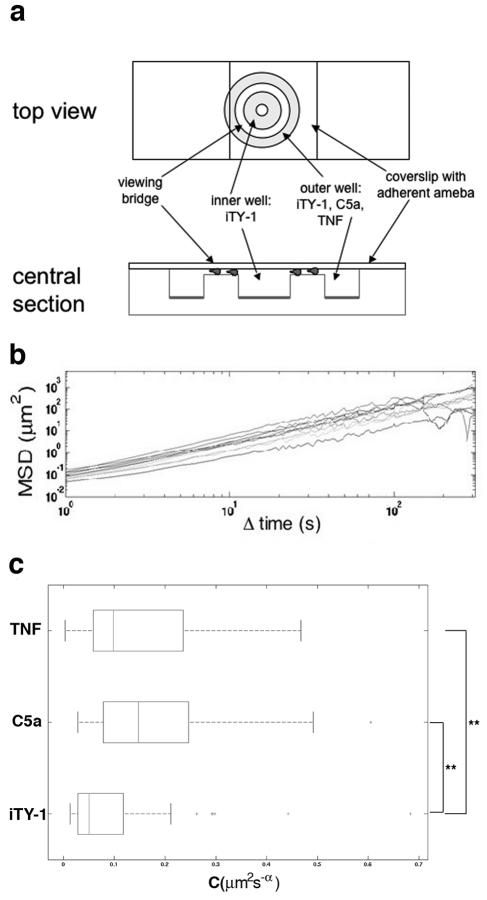FIG. 3.
TNF has a chemokinetic effect on E. histolytica. (a) Dunn chemotaxis chamber (20). The two circular wells were filled with iTY-1. A suspension of amebae was placed on a coverslip, and amebae were allowed to adhere for 10 min at 37°C. The coverslip was turned over and placed on the chamber so that the amebae bathed in the iTY-1. Once the chamber was set up, the outer well was emptied using a syringe and refilled with iTY-1 or the test molecule, C5a (6 nM) or TNF (30 nM). Phase-contrast images of moving cells were recorded by video microscopy at 1-second intervals for 45 min under a Zeiss inverted light microscope using a 10× objective in transmission mode. (b) Mean square displacements for 10 individual cells (different lines), calculated from the parasite trajectories obtained by computerized tracking (21) of the 300 images from 25 to 30 min. The approximate linearity of these curves on a logarithmic scale means that the mean square displacements fit well to power laws 〈(Δr2)〉 = C(Δt)α. The roughly constant exponents α ≈ 1.5 were equivalent to those found for E. histolytica in the absence of chemotactic gradients (6), thus indicating that E. histolytica chemotactic motility is superdiffusive. The constancy of the exponent enables us to use the coefficient C to measure each cell's rate of movement. (c) Rate of movement of E. histolytica during chemotaxis. Box plots of C for cells in iTY-1, C5a, and TNF (n = 58) are shown. E. histolytica trophozoites present in C5a and TNF gradients have a significantly higher rate of movement than trophozoites in iTY-1 (3 and 2 times, respectively). **, significantly different, with α < 0.01. Total numbers of ameba analyzed: iTY-1, n = 53; C5a, n = 43; TNF, n = 58.

